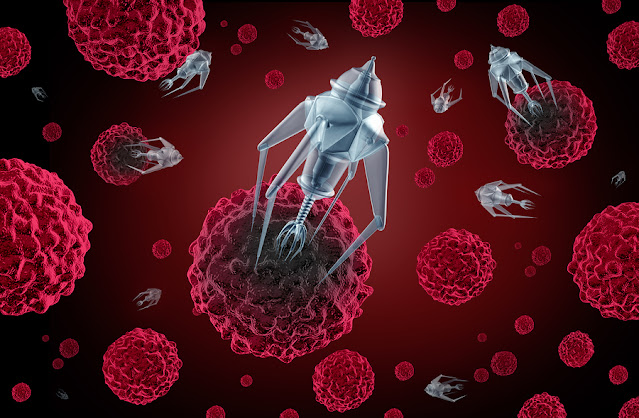Precision Agriculture Unveiled: A Deep Dive into the Growing Need for Agricultural Testing
Agricultural testing has become increasingly important
in today's world. With growing populations and demands for food, it is
essential that we ensure the safety and quality of our food supply through
rigorous testing at various stages of agricultural production and processing.
This helps protect consumers from contamination and illnesses while boosting
their confidence in the food system. It also helps farmers improve their yields
and protect their crops and livestock from diseases.
Soil Testing
One of the most basic yet important types of agricultural testing is soil
testing. Conducting regular soil tests helps farmers understand the nutrient
levels and qualities of the soil they are cultivating. This provides valuable
insights into what nutrients may need to be added to boost fertility and
maximize crop yields.
Some key things soil tests evaluate include:
- Nutrient levels of nitrogen, phosphorus, potassium and other micro nutrients
essential for plant growth.
- Soil pH and how acidic or alkaline it is. Certain crops grow best in specific
pH ranges.
- Presence of contaminants, heavy metals or other elements/compounds that may
harm plant or animal health.
- Physical characteristics of the soil like texture, structure and drainage.
Understanding soil test results allows farmers to apply precisely what their
fields need in terms of fertilizers, lime or other soil amendments. This
optimizes input usage and minimizes wastage, bringing economic benefits. It
also protects the environment by reducing runoff from excessive fertilizer
application.
Plant Testing
Besides soil, another important aspect of agricultural testing involves
directly evaluating crops and plants. This is done at various growth stages to
monitor nutrient uptake and identify any deficiencies, toxicity or disease
problems early on.
Some common plant tests include:
- Leaf analyses to check nutrient content and sufficiency levels for proper
growth. For example, chlorophyll testing for nitrogen status.
- Disease testing of leaves, stems or roots for identification of fungal,
bacterial or viral infections through microscopic examination or DNA tests.
- Maturity and quality testing before harvest to determine ideal
picking/harvesting time. Factors like sugar content, color, size are assessed.
- Post-harvest testing of stored produce for diseases or contamination that
could develop during storage and transportation.
Timely plant testing allows prompt corrective actions like fertilizer foliar
sprays, fungicide/pesticide applications or harvest schedule adjustments. It
minimizes crop/yield losses considerably.
Food Safety Testing
Once crops are harvested, Agriculture
Testinng shifts its focus to
ensuring safety of the food supply. A variety of tests are done at different
stages as briefly outlined below.
- Commodity testing of grains, pulses and produce directly procured from farms
checks for heavy metals, microbes, chemicals and other contaminants.
- Processing facility testing monitors hygiene and sanitation through
microbiological and chemical analyses of environment, equipment, ingredients
etc.
- Microbial testing of processed foods checks for pathogen indicators like
E.coli, Salmonella, yeast and molds.
- Chemical residue analysis detects excessive fertilizer/pesticide traces that
may remain on or in foods despite regular washings and processing.
- Allergen testing verifies labeling and screens for presence of top food
allergens like nuts, dairy, eggs etc. which can cause reactions.
- Nutritional labeling audits ensure declared nutritional values on package
matches actual composition of the product.
Such rigorous food safety testing throughout the supply chain coupled with
traceability systems boosts consumer confidence. It also helps companies recall
products proactively in case of any issues coming to light.
Livestock and Dairy Testing
For animal agriculture as well, various testing protocols are in place. Here
are some of the major ones:
- Animal disease testing screens livestock herds, flocks, and individual
animals for infectious illnesses. Diseases harms animal welfare and risks human
health.
- Milk quality testing analyzes raw milk at collection and processing
facilities for antibiotic residues, somatic cell counts indicating mastitis,
and adulterants.
- Meat inspection involves ante-mortem examination of livestock before
slaughter and post-mortem evaluation of carcasses for contamination and defects
rendering meat unfit for consumption.
- Feed analysis verifies nutritional composition and checks for mycotoxins,
heavy metals, and medication residues in animal feed and fodder.
- Production testing involves estimating breeding/reproductive performance
through pregnancy diagnosis and productivity evaluations for genetic
improvement.
Reliable livestock and dairy testing helps maintain herd/flock health, mitigate
production losses, and safeguard public health by supplying wholesome meat and milk
products. It also bolsters the sector's reputation through compliance with
global trade standards.
In summary, regular testing serves as the backbone of modern agriculture by
monitoring myriad quality parameters from field to fork. It aids continuous
improvement in yields, safety, and sustainability of our food systems. While
involving monetary investments, agricultural testing more than pays off through
increased farm incomes, reduced impact on the environment, enhanced food
security, and protection of public health in the long run. With rising world
population and changing climate, its importance can only increase in the times
to come.
For
more Insights, Read –
https://www.newsstatix.com/agricultural-testing-size-share-analysis-growth/
Check more trending articles related to this topic:
https://captionssky.com/industrial-laser-systems-revolutionizing-precision-manufacturing/




Comments
Post a Comment